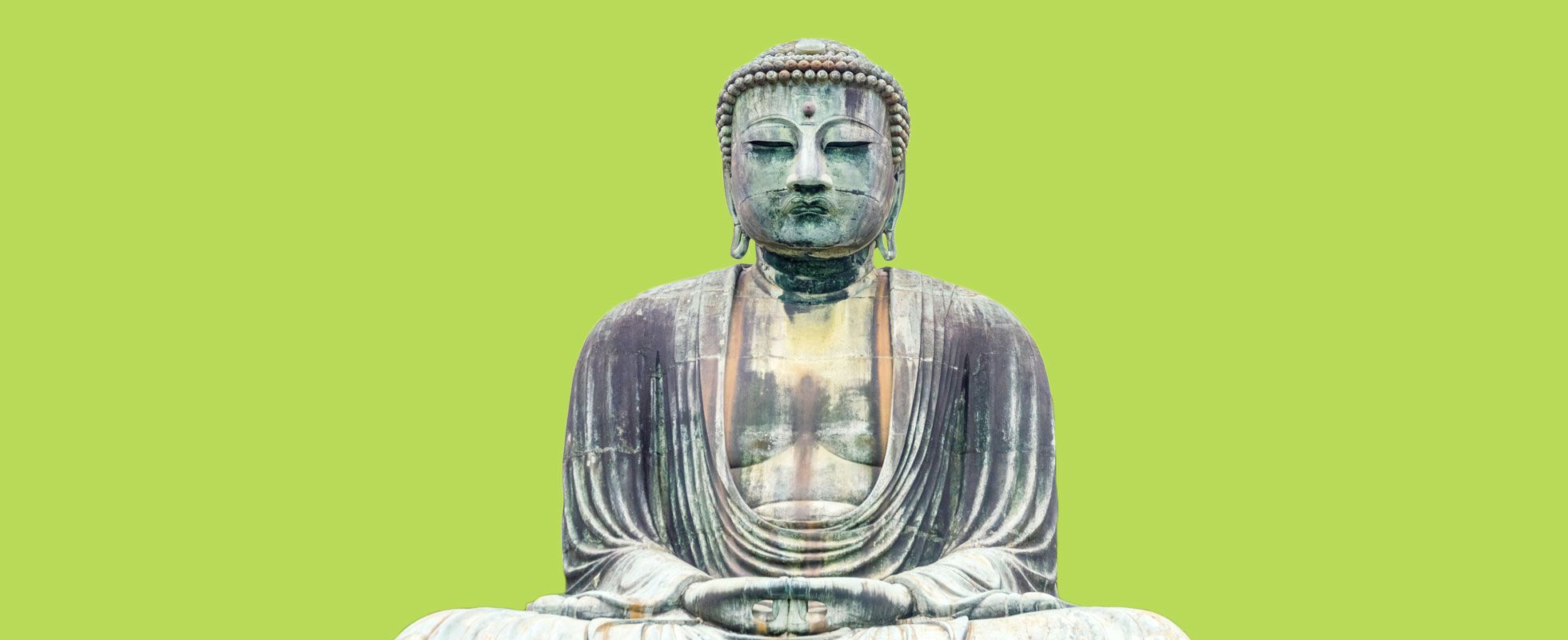Modern humans have a lot to think about. Over the course of a day, we make thousands of decisions, from which socks to wear to what to eat for dinner. Add to that list all the things we ruminate on without even meaning to (that offhand comment made by a coworker, that nagging question of whether we’re managing our finances well) and it’s easy to see how our brains can become overwhelmed.
At the most basic level, mindfulness is the simple act of being aware, as best we can, of all these thoughts — it helps us notice where we direct our attention. Jon Kabat-Zinn, one of the most esteemed researchers working in the field of mindfulness, sums up the practice like this: “Mindfulness is awareness that arises through paying attention, on purpose, in the present moment, non-judgmentally… in the service of self-understanding and wisdom.”
This experience of slowing down and being conscious of the present moment is what we refer to as mindfulness. Standing in line at the grocery store, we could pull out our phones, or we could choose to take a moment to observe. It can be as simple as taking a deep breath and asking yourself: How are you feeling? What do you see, smell, and hear?
Though the two are often grouped together, mindfulness is not the same thing as meditation. Mindfulness can be practiced anywhere, any time, simply by noticing our thoughts and our surroundings, whereas meditation is the intentional cultivation of our ability to be mindful. When we sit or move in a way that is intended to cultivate awareness of the present moment, we are practicing meditation, and the benefits that come with regular practice are myriad.
Benefits of Mindfulness
Scientists began researching the benefits of mindfulness practice in the 1980s, and after decades of study, the results are compelling. Over time, mindfulness — and especially meditation — can actually change the shape and function of the brain, increasing both thickness and density in the regions of the brain responsible for higher-level thinking such as cognition, learning, and memory.
Mindfulness can improve focus and help us solve problems. It can prime us to bounce back from stressful situations. It activates circuitry in the brain connected to feelings of love. It decreases unconscious bias. It helps us sleep better. It improves our overall mental and physical health, and may even help us live longer. Yet one of the top reasons people choose to practice mindfulness is that it brings a sense of calm that continues throughout the day. Bhante Henepola Gunaratana, founding abbot of the Bhavana Society, put it like this: “Mindfulness gives you time. Time gives you choices. Choices, skillfully made, lead to freedom.”
An Ancient Practice
Scriptures describing mindfulness meditation techniques date back thousands of years. As the practice was passed along by traders on the Silk Road in Asia, it was adapted by different cultures, and Buddhists in particular embraced it as the cornerstone of their religious practice.
Specific traditions varied between Zen Buddhists in China, Mahayana Buddhists in India, and Theravada Buddhists in Sri Lanka and Southeast Asia, but the intention to cultivate awareness always remained. His Holiness the 14th Dalai Lama explained it like this: “Whatever forms of meditation you practice, the most important point is to apply mindfulness continuously, and make a sustained effort.”
A Modern Practice
The trick in establishing a regular mindfulness practice is to find a form of meditation that works for you — and there are certainly many different types to choose from.
One classic practice is Transcendental Meditation (or TM), which involves focusing your attention on a mantra (a word or short phrase), and repeating it for a certain duration. Superstar Katy Perry began practicing TM in 2011. “It’s changed my life,” she said. “It’s changed how I think about things. I meditate before I write a song, before I perform. I feel my brain open up and I feel my most sharp.”
Loving Kindness meditations foster goodwill with the repetition of phrases such as “may I/you/we be happy and free from suffering.” Sharon Salzberg, one of the world’s foremost experts on Loving Kindness meditation, reminds us that the practice is a tool we continuously have at our disposal. “Meditation is the ultimate mobile device,” she has said. “You can use it anywhere, anytime, unobtrusively.”
Yoga is often considered a form of moving meditation, bringing the focus into the body. “The nature of yoga,” said instructor and podcaster Jason Crandell, “is to shine the light of awareness into the darkest corners of the body.” At its most meditative, yoga helps us to concentrate on the sensations of the present moment.
Mindfulness has also taken hold in the therapeutic world. Mindfulness-Based Stress Reduction (MBSR) therapy uses various types of meditation practices to help people cope with myriad challenges — including, but not limited to, depression, anxiety, chronic pain, immune disorders, cancer, diabetes, and hypertension.
No matter how you practice, mindfulness is a wonderful way to settle your mind in a world that seems to provide an ever-increasing number of distractions. “We can’t always change what’s happening around us,” said Andy Puddicombe, co-founder of the meditation app Headspace, “but we can change what happens within us.”
Photo credit: Starcevic/ iStock
















